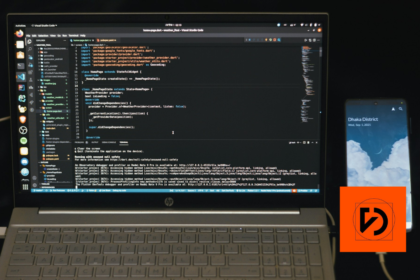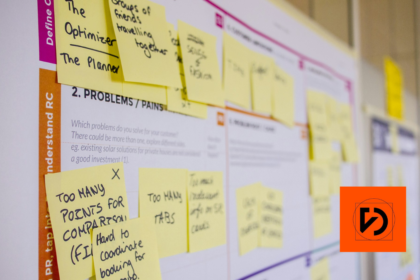Ruby on Rails is a popular framework for creating web applications based on the Ruby language. It was created by David Heinemeier Hansson in 2004 and due to its ease of use and efficiency, it quickly gained popularity. In this article, we’ll discuss how it works, what benefits it offers to developers, and why it’s worth using it for application development.
What should you know about the Ruby on Rails framework?
Ruby on Rails (also RoR or simply Rails) is a popular choice for developers creating web applications. It owes its recognition mainly to the Model-View-Controller (MVC) architecture, which facilitates the organization and maintenance of source code. Thanks to the large number of ready-made solutions it offers, the framework allows for rapid application development without the need to write large amounts of code from scratch. Among the main principles that guide RoR, you can list:
- Speed and convenience of code writing,
- The Don’t Repeat Yourself rule (avoiding the same work in different places),
- The Convention Over Configuration rule (it minimizes the necessary configuration by replacing it with ready-made components),
- Access to plugins (which instantly extend applications with various functions).
How does ROR works?
Firstly, the client must send a request to the application – for example by clicking the appropriate link on the site or filling in a form. Then the controller accepts the request and generates a response in the form of a view sent to the client. Most often, the controller retrieves data from a relational database to generate a response.
What does the Ruby on Rails framework consist of?
Ruby on Rails is a tool for creating virtually any type of web application. Its components include:
- ActiveRecord – this module is responsible for communicating with databases and so-called persistence, i.e. permanent data storage outside the program.
- ActionPack – used to handle HTTP requests and responses (defines, for example, controllers through the ActionController class).
- ActionSupport – a set of useful additions to the standard Ruby library.
- ActiveJob – an interface that allows you to define background jobs.
It is worth noting that each of these elements can be installed separately, for example through the RubyGems package manager.
How does the server work in Ruby on Rails?
The server in Ruby on Rails is an application that allows you to run and service a web application written in this framework. It works based on a special configuration file, which specifies which files and libraries must be loaded into memory before the server is started.
The basic server used in Ruby on Rails is WEBrick, which is installed by default with Ruby. In practice, however, other servers such as Puma or Unicorn, which offer better performance and scalability, are often used. When started, the server assigns incoming requests to the appropriate controllers and returns a response to the user based on their actions.
Which databases does Ruby on Rails work with?
Ruby on Rails can work with various databases. The only condition that must be met is the existence of a library responsible for its service for Ruby and the support of this database by ActiveRecord. Currently supported databases include MySQL, Oracle, MS SQL Server, OpenBase and SQLite. Rails code should work with all types of data in the same way. Its migration mechanism allows you to change and control the table schema in the database regardless of its type, using only Ruby code.
What does a Ruby on Rails developer do?
A Ruby on Rails developer is responsible for programming applications from scratch or developing existing projects, depending on the client’s needs. To do this, they must have a good knowledge of the Ruby language and Rails framework, as well as other web technologies such as HTML, CSS and JavaScript.
The main tasks of a Ruby on Rails developer include:
- Designing and implementing the functionality of a web application in accordance with customer requirements.
- Maintaining and developing existing projects.
- Creating and implementing unit and functional tests.
- Optimizing application performance and scaling it as needed.
- Collaboration with a team of programmers, designers and other specialists such as testers and system administrators.
Who is Ruby on Rails for?
Ruby on Rails can be effectively used by literally everyone – from non-profit organizations, through small companies, to large corporations. The framework is particularly appreciated in startups and companies that focus on rapid prototyping and implementation of new applications or provide services to customers from various industries.














